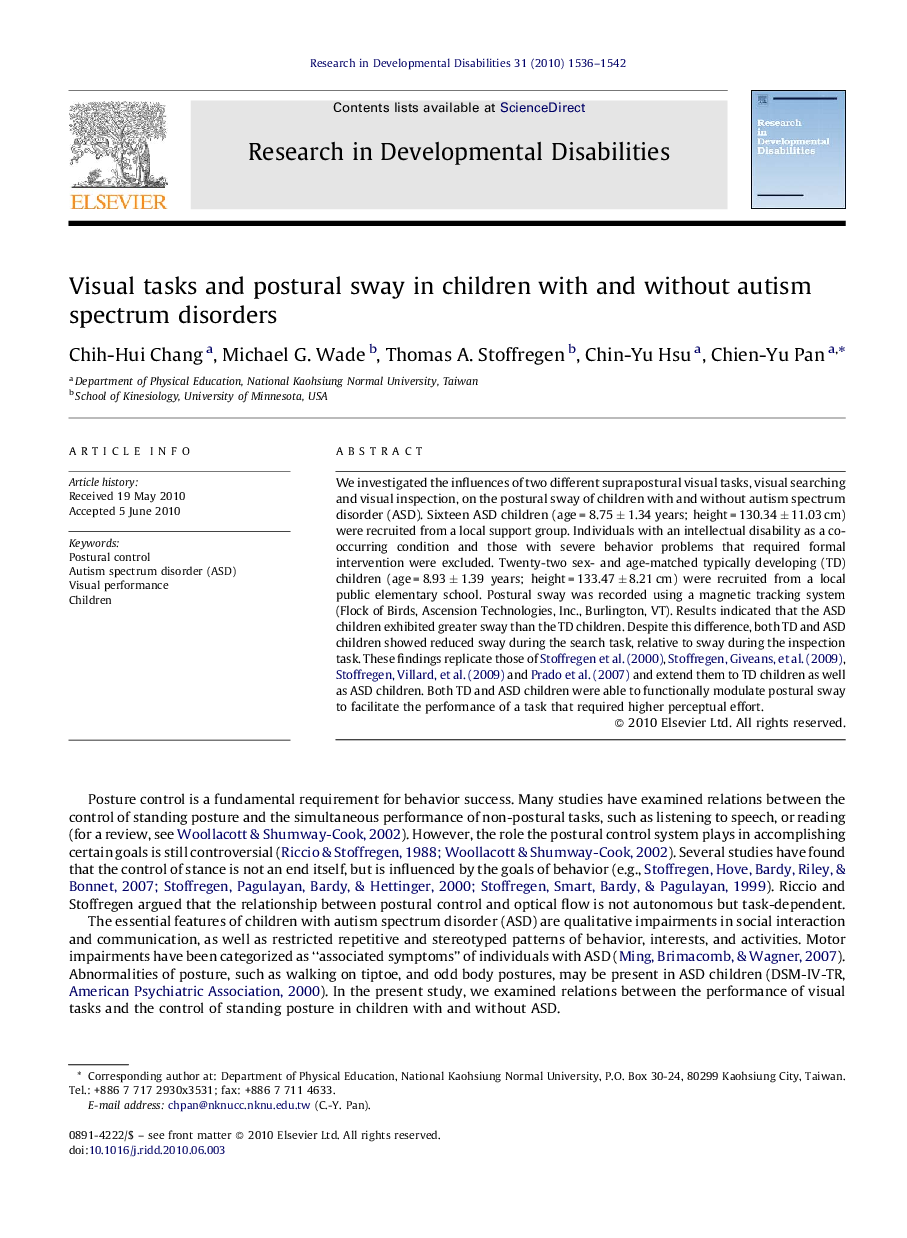| Article ID | Journal | Published Year | Pages | File Type |
|---|---|---|---|---|
| 10318325 | Research in Developmental Disabilities | 2010 | 7 Pages |
Abstract
We investigated the influences of two different suprapostural visual tasks, visual searching and visual inspection, on the postural sway of children with and without autism spectrum disorder (ASD). Sixteen ASD children (age = 8.75 ± 1.34 years; height = 130.34 ± 11.03 cm) were recruited from a local support group. Individuals with an intellectual disability as a co-occurring condition and those with severe behavior problems that required formal intervention were excluded. Twenty-two sex- and age-matched typically developing (TD) children (age = 8.93 ± 1.39 years; height = 133.47 ± 8.21 cm) were recruited from a local public elementary school. Postural sway was recorded using a magnetic tracking system (Flock of Birds, Ascension Technologies, Inc., Burlington, VT). Results indicated that the ASD children exhibited greater sway than the TD children. Despite this difference, both TD and ASD children showed reduced sway during the search task, relative to sway during the inspection task. These findings replicate those of Stoffregen et al. (2000), Stoffregen, Giveans, et al. (2009), Stoffregen, Villard, et al. (2009) and Prado et al. (2007) and extend them to TD children as well as ASD children. Both TD and ASD children were able to functionally modulate postural sway to facilitate the performance of a task that required higher perceptual effort.
Related Topics
Life Sciences
Neuroscience
Behavioral Neuroscience
Authors
Chih-Hui Chang, Michael G. Wade, Thomas A. Stoffregen, Chin-Yu Hsu, Chien-Yu Pan,
